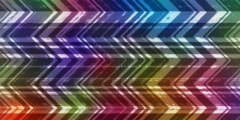Working with images
This discussion is connected to the gimp-user-list.gnome.org mailing list which is provided by the GIMP developers and not related to gimpusers.com.
This is a read-only list on gimpusers.com so this discussion thread is read-only, too.
| Working with images | Steve Kinney | 24 Apr 02:13 |
Working with images
On Sat 23/04/16 19:13 , Deborah Bates batesd124204@gmail.com sent:
I'm new to Gimp and not familiar with some of the terminology, so pleasekeep that in mind with your responses. I have an image of a diamond that Ihave scaled from 100% to 50%. I want to duplicate that image side by side all over the screen to use as a background. What is the best way to do that? Thanks so much for your help!
The easiest way is to put your image file in whatever directory your operating system keeps its desktop backgrounds in, select it in your desktop settings, and the same menu where you can do that should include an option called "tile" or "mosaic" that will do the job.
But that answer's no fun at all: Doesn't got any GIMP in it.
So open up your image in the GIMP, and try these commands:
1st option: In the main menu, go to to Filters > Map > Tile. A dialog box will open, asking you what size to tile your image to, and whether or not to make a new file for the expanded version of your image. Enter the size you want the tiled image to be. You will probably have to click on the small chain-link icon next to the boxes where you enter your new image size; otherwise, entering one dimension will automatically change the other, to retain the same ratio of height to width. When your desired size (in pixels) is set, click the OK button and there it is: Your image duplicated side by side. It most likely won't come out even, that is, the edge of the image will cut off parts of your diamond in those rows. To avoid this, you can try again: Next to where you enter the new image size is a selector that says "px" for "pixels." You can change that to "%" and enter even multiples of 100 to assure that "whole" copies of your image fill the resulting expanded version. But that won't be the same size as you monitor, so a bit more tweaking may be required. See "More" below.
2nd option:
Do you see unwanted seams between the individual copies of your original image?
Here's a quick fix that usually works: Discard your tiled-up image, open the
original, and in the main menu select: Filters > Map > Make Seamless. This tool
presents no options, it just does the deed: blends the edges and corners of the
image with their opposite counterparts to make a seamless fit when they are
assembled side by side. Then return to option 1, and tile that "seamless" image
up to the size you want. Example:
http://docs.gimp.org/en/plug-in-make-seamless.html
More:
You probably won't like the result of any of the above as a desktop background, because it will most likely be way off center. You can do a lot of tinkering to arrive at different solutions to this, but here's a very simple one to try: Using your original "made seamless" version of the diamond image, use the Tile tool to make an image larger than your monitor screen. Then use the Crop tool to cut the tiled image down to size, centered where you want it to be for best results. Turn on the Crop tool in the toolbox (its icon looks like an Xacto knife), and find the Tool Options dialog tab. If you have not customized your GIMP installation, it should be the window directly below the toolbox itself. Click and drag with your mouse to draw a box in the upper left corner of the tiled image. In the boxes labeled "Size" in the Crop tool's dialog, enter the width and height of your monitor: The rectangle on your image will grow to that size. Now, right click and hold down your mouse button inside that box, and drag it around until you like what you see. Release the mouse button, click and release inside the rectangle, and there it is: An image the size of your monitor screen.
There's a lot more things you can do in this category. Check YouTube for video tutorials, search the web for written ones, and have fun!
:o)
Steve











